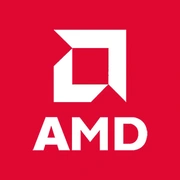AMD FX-8320

AMD FX-8320 in 2025: Is it Worth Building a PC on the Legendary "Eight-Core"?
Introduction
The AMD FX-8320 processor, released in 2012, has become iconic among budget build enthusiasts. Despite its age, it can still be found for sale (new units range from $60–80). But is it still relevant in 2025? Let's examine who this chip is suitable for and how to use it.
1. Key Specifications: The Old Warrior
Architecture and Process Technology:
The FX-8320 is based on the Piledriver microarchitecture (Vishera family) with a 32nm manufacturing process. It features 8 physical cores without support for multithreading (8 threads), which sets it apart from modern CPUs with SMT/Hyper-Threading. The base clock frequency is 3.5 GHz, and the turbo mode can reach up to 4.0 GHz.
Key Features:
- High Overclocking Potential: With good cooling, the chip can stably run at 4.5–4.8 GHz.
- Large L3 Cache: 8 MB is a decent figure for the DDR3 era.
- Affordable Multitasking: 8 cores handle rendering and data streaming effectively.
Performance:
- Geekbench 6: 456 (Single-Core), 1739 (Multi-Core). In comparison, the Ryzen 3 7300 (2024) scores 1800/5500 — a difference of 3–4 times.
- Real-World Experience: In 2020s games (e.g., Cyberpunk 2077), the CPU delivers about 30–45 FPS on low settings due to weak IPC (instructions per clock).
2. Compatible Motherboards: Hunting for Rarities
Socket: AM3+ — an outdated socket with no new boards being released. In 2025, only used or leftover new ones are available (price: $70–120).
Chipsets:
- 990FX: The best choice for overclocking (e.g., ASUS Crosshair V Formula).
- 970: Budget boards (Gigabyte GA-970A-DS3P) but with limitations on VRM power delivery.
Selection Tips:
- Look for boards with VRM heatsinks and USB 3.0 support.
- Check compatibility lists on the manufacturer's website — some BIOS versions do not work with the FX-8320.
3. Memory: The DDR3 Era
The FX-8320 only supports DDR3 memory with speeds up to 1866 MHz (overclockable to 2133 MHz). The maximum capacity is 32 GB (4 slots).
Issues:
- No support for DDR4/DDR5 — this is a "bottleneck" for performance.
- Dual-channel mode (2x8 GB DDR3-1866) is recommended for gaming.
Example: A Patriot Viper 16 GB DDR3-1866 kit costs about $45 (new).
4. Power Supply: Don’t Skimp on Watts
Power Calculation:
- The CPU’s TDP is 125W, but it can draw up to 200W when overclocked.
- A mid-range graphics card like the NVIDIA GTX 1660 Super adds about 120W.
- Overall: a minimum of 500W is recommended (600–650W with an 80+ Bronze certification).
Tip: Get a PSU with overload protection on the +12V rail (e.g., Corsair CX650M — $75). Avoid cheap no-name models — they pose a risk of VRM failure on the motherboard.
5. Pros and Cons: A Balance of Capabilities
Pros:
- Affordability: A CPU + motherboard + RAM bundle will cost around $150–200.
- 8 cores for parallel tasks: rendering, streaming, virtualization.
- Easy upgrade path: you can install a more powerful FX-9370 (though it runs hot).
Cons:
- Low IPC: lagging behind modern CPUs in gaming and applications.
- High power consumption: electricity bills will increase.
- No PCIe 4.0/5.0, NVMe, USB-C — limitations for SSDs and peripherals.
6. Use Scenarios: Where the FX-8320 Still Holds Up
- Office and Multimedia: Watching 4K videos, working with documents, using a browser with multiple tabs.
- Server Tasks: File storage, home NAS, Minecraft server (up to 20 players).
- Retro Gaming: Running games from the 2010s (The Witcher 3, GTA V) at medium settings.
Not Suitable For:
- Contemporary AAA games and VR.
- Software with a focus on Single-Core (Photoshop, AutoCAD).
7. Comparison with Competitors
- Intel Core i5-3470 (Ivy Bridge): Better for single-threaded tasks but has only 4 cores. Price used — $25.
- Ryzen 3 7300 (Zen 4): 2–3 times faster, supports DDR5, but the CPU + motherboard + RAM bundle starts at $300.
- Xeon E5-2670 (Sandy Bridge-EP): 8 cores/16 threads for $40 (used), but requires a server motherboard.
Conclusion: The FX-8320 is a choice for those who prioritize price over performance.
8. Practical Assembly Tips
- Cooling: Get a tower cooler (DeepCool Gammaxx 400 — $30). The stock "box" cooler won’t handle overclocking.
- Graphics Card: Do not install a GPU more expensive than the Radeon RX 6600 — the CPU will become a bottleneck.
- Storage: Use a SATA SSD (Samsung 870 EVO 1 TB — $80). NVMe via a PCIe 2.0 adapter will be slow.
Example Build:
- CPU: AMD FX-8320 ($70)
- Motherboard: ASUS M5A97 R2.0 ($90)
- RAM: 16 GB DDR3-1866 ($45)
- PSU: Corsair CX650M ($75)
- Total: ~$280 without a graphics card.
9. Final Conclusion: Who is the FX-8320 Suitable For?
This processor should only be considered in three scenarios:
1. Super Budget Build: When the total budget is $300–400.
2. Upgrading an Old PC: If you already have an AM3+ motherboard and DDR3 RAM.
3. Experimentation: For learning overclocking or building a retro system.
Alternative: For the same $200–300, you could buy a used Ryzen 5 2600 + AM4 bundle — this will offer more future-proofing and significantly higher performance.
Conclusion
In 2025, the AMD FX-8320 is a prime example of a "living legend," but its time has passed. It is suitable only for a narrow audience willing to accept compromises. If you need a PC "for now" and don’t plan on upgrading — this is a viable option. In all other cases, it’s better to choose an AM4 or AM5 platform, even in the secondary market.
Basic
CPU Specifications
Memory Specifications
GPU Specifications
Benchmarks
Compared to Other CPU
Share in social media
Or Link To Us
<a href="https://cputronic.com/index.php/cpu/amd-fx-8320" target="_blank">AMD FX-8320</a>